London designer makes 'Boris buggies' for babies
- Published
Sangwoo Park demonstrates to Dougal Shaw how the system would work in his studio
A designer and desperate parent is proposing a baby buggy-hire system for cities, based on London's so-called Boris bike scheme.
The project was inspired by his wife's recurring nightmare.
"In the dream, many people were blaming her and were angry. She would keep saying, 'Sorry, sorry, thank you, thank you,'" explains Sangwoo Park.
"We tried to translate the dream and we thought it was because she felt guilty when she went out with our baby."
He pauses, and appears to recall some incidents.
"Actually she was not good with the pushchair, and she would bump into other people's heels."
Baby blues
It is a nightmare many urban parents will sympathise with - certainly in Mr Park's adopted home of London.
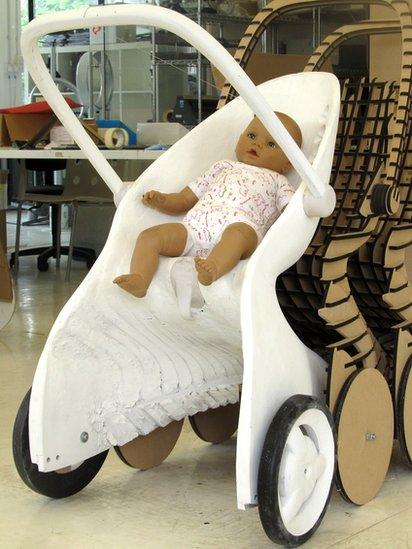
The design needed to be robust, stackable and easy to clean
Only a few underground stations have lift access, meaning parents have to rely on the kindness of strangers, as they struggle up and down stairs.
Buses can take usually just two or three buggies. At rush hour this is an unenviable experience - even if you are lucky and the baby is asleep.
Scattered around Mr Park's studio lies his practical solution to this problem: prototype materials for an urban, baby-buggy hire system. The idea is that you take your baby into town using a sling, then use the buggy when you are ready.
His bold plan combines two existing systems. He was impressed by the idea of "trolley nesting" in supermarkets, which is very efficient with space; and the "Boris bike" concept of offering short-term hire to pre-existing members, a scheme which began in London, and has now rolled out to other cities, like Reading and Nottingham.
Mr Park's studio prototype shows how the system will work. Users will first be confronted by a plinth next to the buggies, where they offer their fingerprint to confirm they are on the system and have credit. They can then unlock the next buggy in the line.
"My engineering challenge was how can I unlock only the last one in the queue," explains Mr Park.
His device is more sophisticated than the supermarket pound coin mechanism.
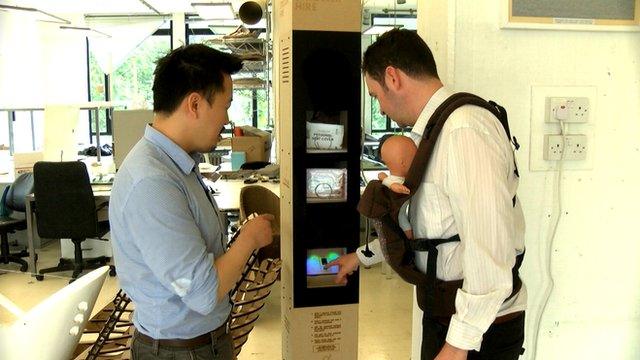
Users are confronted with a plinth and must offer their fingerprint
"I use tiny microswitches. When pushed by the next in the queue, it breaks its own circuit, which transfers the signal to the next one."
The system knows that the user has a valid deposit, and enough credit to hire the buggy.
Advice sought
In the early days of the project, Mr Park sought the advice of Paul Marchant, product design manager at Transport for London (TfL).
He had not come across anything like this before.
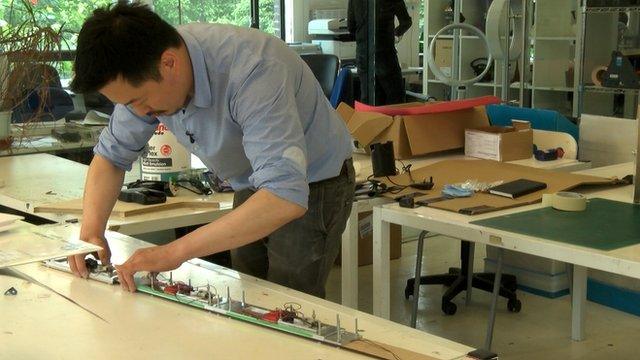
The main engineering challenge was the mechanical release system, according to Mr Park
He cautioned that hygiene, vandalism and lost buggies would be a concern, recalls Mr Park.
This advice influenced the final design, which bears a passing resemblance to a Sinclair C5. It is moulded in a continuous shape with few edges, which allows it to "nest" with other buggies, but also makes it easy to clean.
Will it work?
Mr Park was already a successful designer in South Korea, but completed the project as part of a graduate degree at London's Royal College of Art.
He has since been in talks with one British company to see if the idea could work as a scaleable product. They haven't decided yet.
Paul Marchant of TfL believes the project has potential. "The concept is good, and has legs," he says, though he doesn't think it is ready for city-wide deployment.
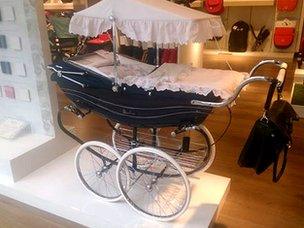
Pushchairs and prams can be identity statements for parents
"When you create new archetypes, you need to change people's behaviour," he warns.
"Buggies are quite specific domestic objects, and are tied up with parents' identity. Whether you have a Maclaren or Bugaboo buggy says something about you."
Park's design is sleek and modern, if somewhat bulky - but of course they all look the same. It remains to be seen what people will think of them as identity statements.
Mr Marchant says for now the concept is better suited to smaller arenas, like shopping arcades or airports.
However, Justine Roberts, founder of Mumsnet, is more optimistic. "It could prove very useful," she says. "Obviously the buggies would have to be wipeable, and parents would have to make sure to clean up after each journey!"
It is a view broadly shared by London mum and blogger, external Gillian Crawshaw. "Anything that can make parents' lives easier in this regard is fantastic, although hygiene and comfort for your baby would be huge factors in people using them," she says.
"I do think though that ultimately more needs to be done to make central London accessible for all; not just parents with prams, but everyone who has problems using station stairs and public transport."
Whatever the fate of the design, one goal has been reached. The nightmares of Mr Park's wife are over.
"Our boy is now three and walks a lot," says Mr Park. "I still use just a foldable buggy sometimes when I'm with him. And it hurts my shoulder a lot when I carry it."
- Published11 April 2013
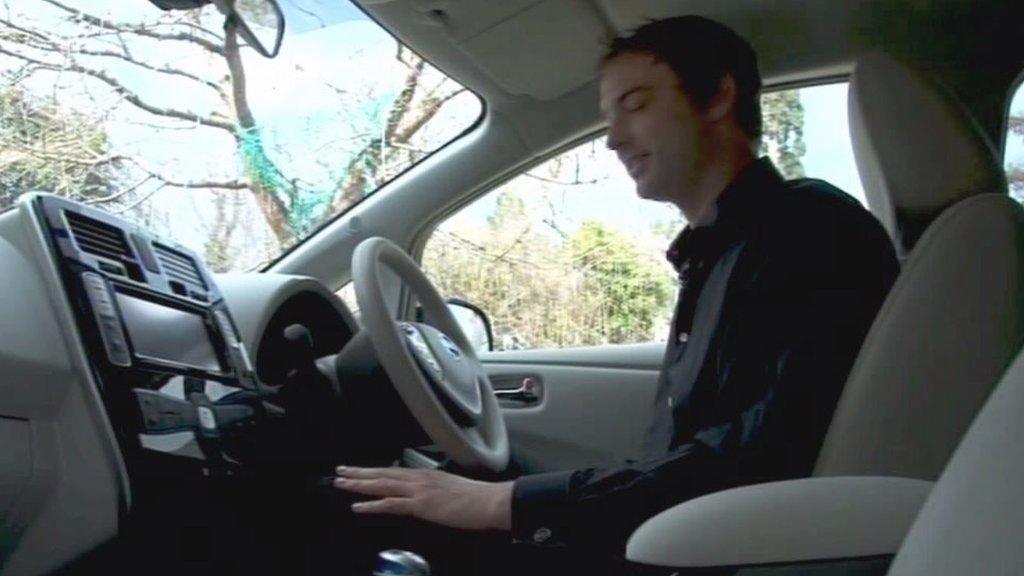
- Published15 February 2011
- Published22 September 2012
